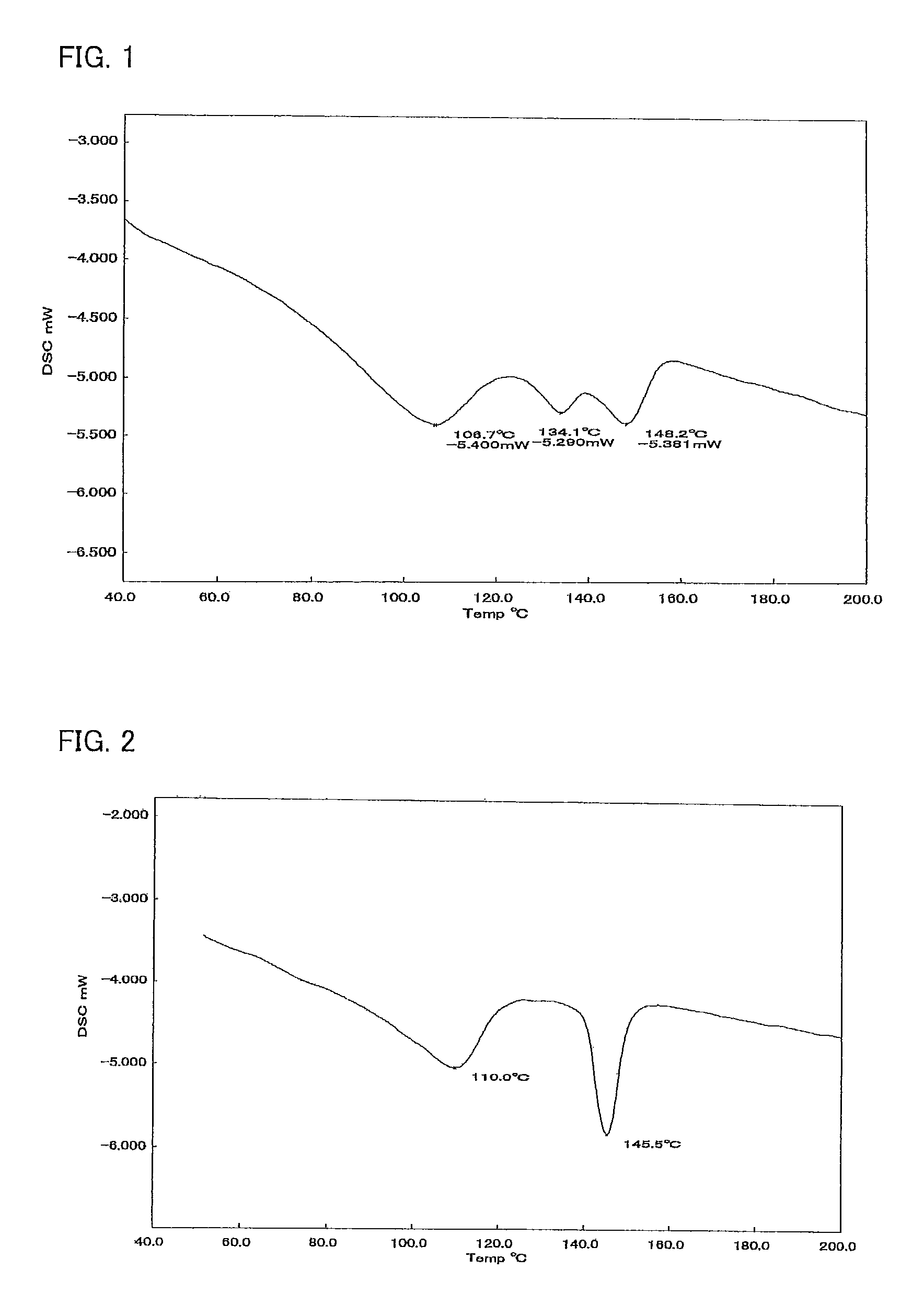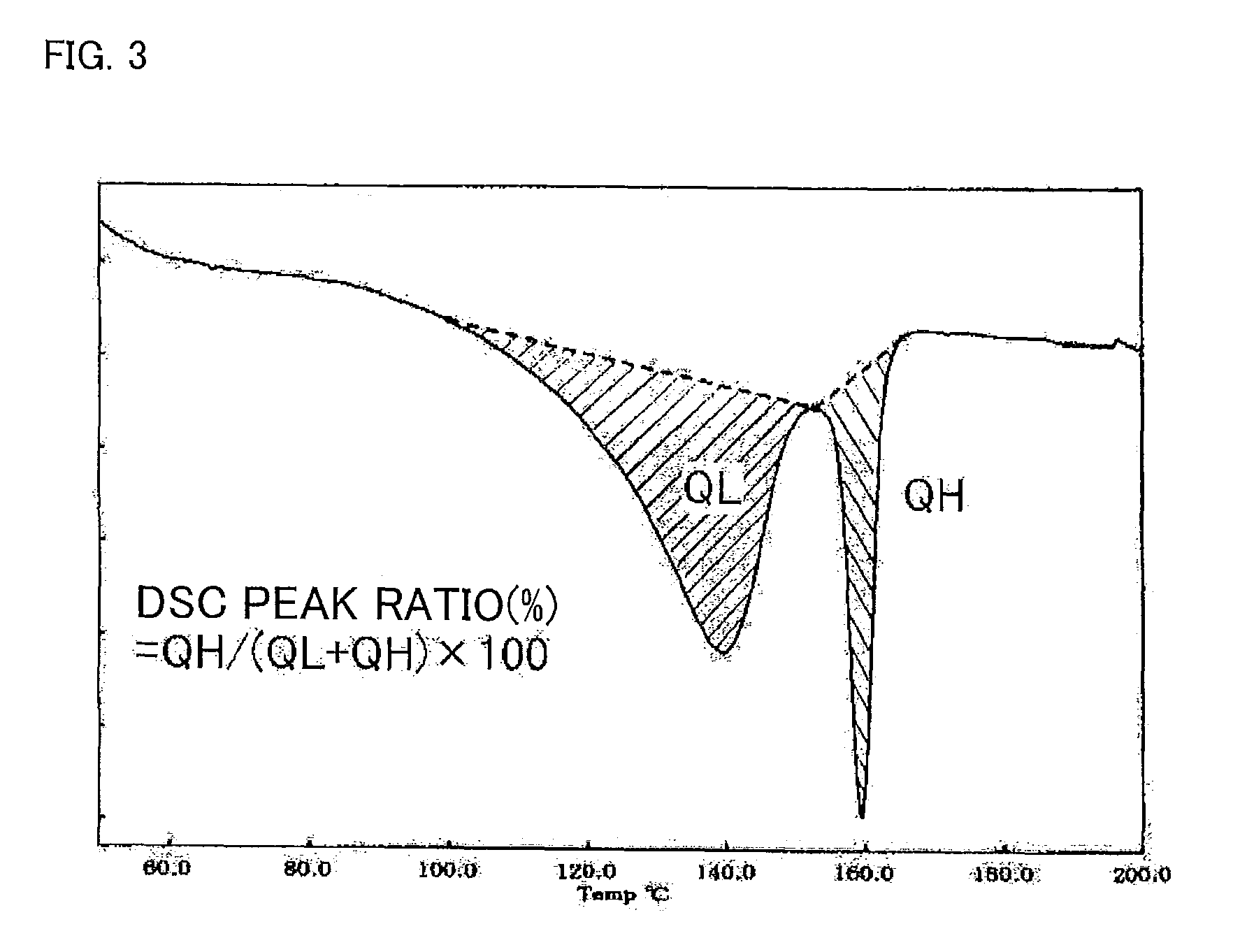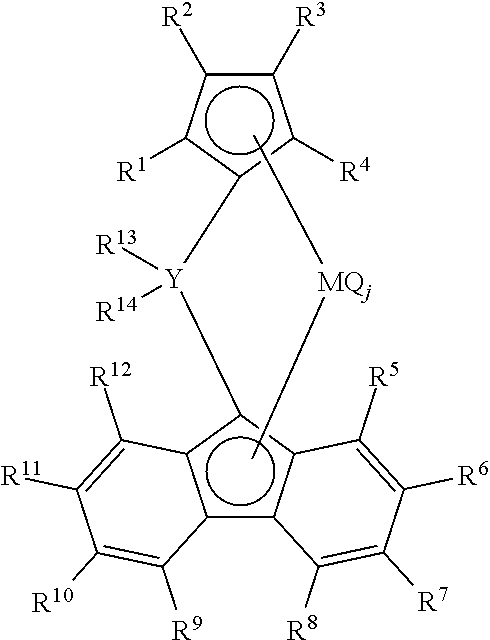Polypropylene resin expanded particles and polypropylene resin in-mold foaming molded body
a polypropylene resin and expanded particle technology, applied in the field of polypropylene resin expanded particle, can solve the problems of high molding steam cost, deformation or shrinkage of expanded particle, and inability to fuse well with each other in some parts of the molding, and achieve low distortion, wide range of heating conditions, and low shrinkage
- Summary
- Abstract
- Description
- Claims
- Application Information
AI Technical Summary
Benefits of technology
Problems solved by technology
Method used
Image
Examples
example 1
[0144]
[0145](1) Production of Solid Catalyst Carrier
[0146]300 g of SiO2 (produced by Dohkai Chemical Industries Co., Ltd.) was sampled into a 1 L side-arm flask, and slurred with 800 mL of toluene added into the flask after the sampling of SiO2. Then, this slurry was transferred into a 5 L four-necked flask, and 260 mL of toluene was added into the slurry. Further, 2830 mL of methylaluminoxane (hereinafter, MAO) toluene solution (solution of 10% by weight, produced by ALBEMARLE JAPAN CORPORATION) was introduced into the flask, and the mixture thus obtained was agitated for 30 minutes. A temperature in the flask was raised to 110° C. gradually over one hour, and the mixture was agitated for four hours at 110° C. After this agitation, the mixture was cooled to a room temperature.
[0147]After cooling, a supernatant toluene was removed from the mixture, and fresh toluene was supplied to the mixture in replacement of the removed supernatant toluene. This toluene replacement was repeated u...
example 2
[0171]A propylene-ethylene random copolymer was obtained in the same way as Example 1, except for the followings: in polymerization (5) of according to Example 1, (i) hydrogen was supplied into a polymerization vessel (capacity: 1000 L) so that concentration of hydrogen became 0.45% by mol in a gas phase section and (ii) hydrogen was supplied into a polymerization vessel (capacity: 500 L) so that concentration of hydrogen became 0.45% by mol in a gas phase section.
[0172]The propylene-ethylene random copolymer thus obtained had ethylene content of 5.2% by weight and polypropylene homopolymer content of 15% by weight, and a lowest melting peak temperature and a highest melting peak temperature which were obtained by the measurements of the melting points using the differential scanning calorimeter were 104° C. and 146° C., respectively, and MFR was 17 g / 10 min.
[0173]Resin particles, expanded particles, and an in-mold foaming molded product were obtained in the same way as Example 1, ...
example 3
[0174]A propylene-ethylene random copolymer was obtained in the same way as Example 1, except for the followings: in polymerization (5) of according to Example 1, (i) hydrogen was supplied into a polymerization vessel (capacity: 1000 L) so that concentration of hydrogen became 0.52% by mol in a gas phase section and (ii) hydrogen was supplied into a polymerization vessel (capacity: 500 L) so that concentration of hydrogen became 0.52% by mol in a gas phase section.
[0175]The propylene-ethylene random copolymer thus obtained had ethylene content of 5.2% by weight and polypropylene homopolymer content of 15% by weight, and a lowest melting peak temperature and a highest melting peak temperature which were obtained by the measurements of the melting points using the differential scanning calorimeter were 106° C. and 146° C., respectively, and MFR was 24 g / 10 min.
[0176]Resin particles, expanded particles, and an in-mold foaming molded product were obtained in the same way as Example 1, ...
PUM
| Property | Measurement | Unit |
|---|---|---|
| temperature | aaaaa | aaaaa |
| temperature | aaaaa | aaaaa |
| temperature | aaaaa | aaaaa |
Abstract
Description
Claims
Application Information
 Login to View More
Login to View More - R&D
- Intellectual Property
- Life Sciences
- Materials
- Tech Scout
- Unparalleled Data Quality
- Higher Quality Content
- 60% Fewer Hallucinations
Browse by: Latest US Patents, China's latest patents, Technical Efficacy Thesaurus, Application Domain, Technology Topic, Popular Technical Reports.
© 2025 PatSnap. All rights reserved.Legal|Privacy policy|Modern Slavery Act Transparency Statement|Sitemap|About US| Contact US: help@patsnap.com



